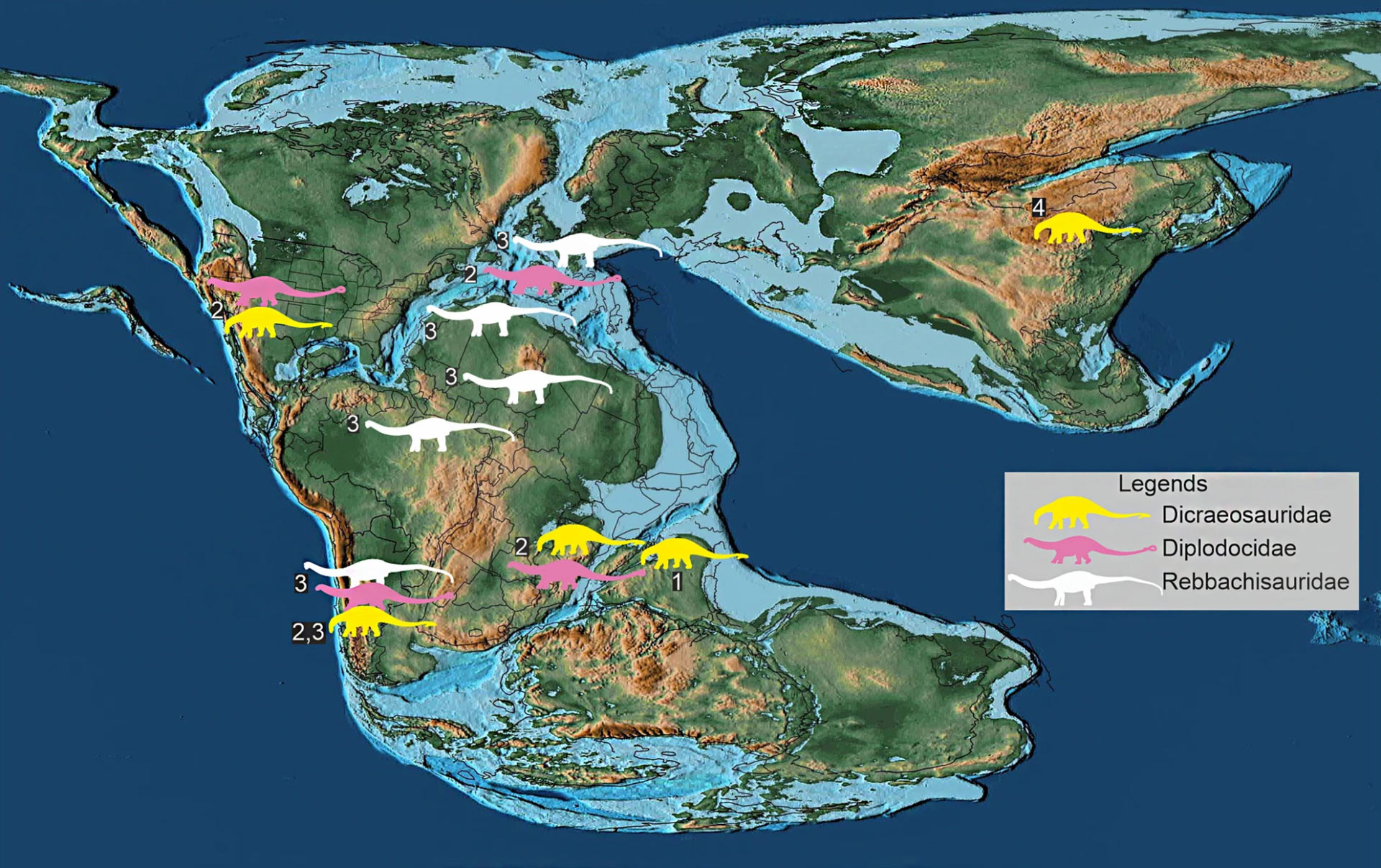Paleontologists from the Indian Institute of Technology and the Geological Survey of India have described a new genus and species of dicraeosaurid sauropod dinosaur from a fossilized skeleton found in western India.
The newly-decribed species roamed our planet during the Middle Jurassic period, approximately 167 million years ago.
Scientifically named Tharosaurus indicus, the ancient reptile was a type of dicraeosaurid, a family of diplodocoid sauropods that existed from the Middle Jurassic to the Early Cretaceous.
First described by the German paleontologist Werner Janensch in 1914, dicraeosaurid fossils are known from North America, Asia, Africa, and South America.
“Sauropods, a speciose group of saurischian dinosaurs that dominated the terrestrial landscapes until the end-Cretaceous are characterized by a small skull, elongated neck and tail, columnar limbs, and a quadrupedal gait,” said Indian Institute of Technology researcher Sunil Bajpai and colleagues.
“Within Sauropoda, Dicraeosauridae represents a clade of small-bodied diplodocoids that are known for their distinctive vertebral morphology with long paired neural spines.”
“Dicraeosaurids range in age from the Middle Jurassic-Early Cretaceous and are mostly known from the Gondwanan landmasses of Africa and South America, besides a few Laurasian occurrences in the United States and China.”
The remains of Tharosaurus indicus were recovered from the Jaisalmer Formation near Jethwai village, the Indian state of Rajasthan.
“The fossils include disarticulated, but associated, specimens of the axial skeleton spread over an area of 25 m2,” the paleontologists said.
According to the researchers, the specimens represent the first ever remains of a dicraeosaurid sauropod from India.
The discovery provides new insights into sauropod diversity of the Indian Gondwana, with important implications for the origin and dispersal of Neosauropoda.
“Tharosaurus indicus is among the earlier-diverging dicraeosaurid dinosaurs, and its stratigraphic age makes it the earliest known diplodocoid dinosaur globally,” the authors said.
“Paleobiogeographic considerations of the new species, seen in conjunction with the other Indian Jurassic sauropods, suggest that Tharosaurus indicus is a relic of a lineage that originated in India and underwent rapid dispersal across the rest of Pangea.”
Sources:
S. Bajpai et al. 2023. Fossils of the oldest diplodocoid dinosaur suggest India was a major centre for neosauropod radiation. Sci Rep 13, 12680; doi: 10.1038/s41598-023-39759-2
Discover:
The Rise and Fall of the Dinosaurs:
A New History of a Lost World
"The Rise and Fall of the Dinosaurs is a biography of these magnificent lost beings and their world."--London Review of Books












%20has%20found%20more%20than%201,000%20galaxies%20mysteriously%20resembling%20our%20own%20Milky%20Way%20hiding%20out%20in%20the%20early%20universe..jpg)




